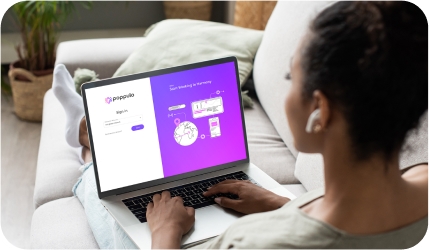Employee-generated content is comms Judo
By
— March 4th, 2021

The basic idea behind judo is to use an attacker’s energy against him, rather than directly opposing the force.
Our employees are not our enemies, of course. We can, however, use employee energy to confront shortcomings in internal communications.
Two central principles for judo are:
- seiryoku zen'yō (精力善用) which means “maximum efficiency, minimum effort,” and
- jita kyōei (自他共栄), which means “mutual welfare and benefit”
Enabling a program for employee-generated content is a way to increase your team’s efficiency using minimal effort to everyone’s benefit. That’s internal comms judo.
Employee-centric communications: The key to workplace engagement
No Sweat
Enabling employee-generated content has four major benefits:
- Creates a system of sustainable and virtuous content generation
- Optimizes your editorial team and efforts
- Increases the localization of communications
- Allows employees to take ownership of the information that is relevant to their work experience
Employee-generated content (EGC) allows employees to create a narrative that is complementary to the formal corporate story. EGC is direct, authentic, credible, and cuts through PR and Marketing speak. EGC, therefore, is more likely to generate interest and action among fellow employees.
Moreover, allowing employees to contribute to communications helps them more deeply connect to the organization’s operations. EGC fosters transparency, makes communications more efficient, enables information sharing, and boosts collaboration.
In short, EGC becomes a strategic advantage that supports an organization’s business objectives.
The Tribe
Employee-generated content is also an alternative way to uncover above average talent and ideas, which can positively affect productivity and, by extension, profitability.
For example, at one company I worked for I set up a chatroom called Tribal Knowledge that was open to all employees where anyone could ask or answer questions about how to get things done at the company. This was for the stuff that wasn’t covered in a handbook or policy or was easily discovered on the intranet, such as:
- Where can I get company swag?
- How do I send a large file to a co-worker?
- Where can I sit when I visit the Hong Kong office?
- How do I connect my smartphone to the WiFi?
Employees could very quickly get an answer and then get back to work, decreasing the time they spent searching for information or embarking on wild goose chases.
The chatroom was a content fountain that never turned off. During the course of a week I’d collect all the questions that were asked and their answers and post the information to the intranet – BOOM! In no time I was repurposing extremely helpful employee-generated content – a surefire intranet hit – and I didn’t break a sweat.
What’s more, employees who regularly answered questions in the chatroom became trusted influencers and helped shape the way employees thought and behaved.
Content Series
There are many other ways employee-generated content can take a load off the internal comms team’s operations. For example, let’s say one of your editorial priorities is to increase your employees’ leadership abilities. Try setting up a monthly editorial series (text or video) that is written/produced by members of HR’s talent development team.
- This is an example of a moderately sustainable program because it requires some effort on your part (e.g., scheduling, editing, publishing), but the bulk of the work will be done by your HR colleagues, thereby freeing up your time for other activities.
- Read more about this real example.
Success
What does the success of an employee-generated content program look like? There are several quantitative metrics you should consider, including:
- Unique contributors
- Series managed by others (like the HR series mentioned above)
- Pieces of content (e.g., stories, infographics, photos)
- The breadth of distribution (i.e., the number of channels it published to)
- Engagement (e.g., comments, likes, ratings)
As more and more employees participate in creating (and sharing) content, your team will become more efficient and productive. The time you gain, which can also be quantified, can be used for strategic efforts that support the company’s growth (and therefore, that show the value of internal comms).
Internal communications done by employees not in Internal Communications? That’s straight up comms judo.











